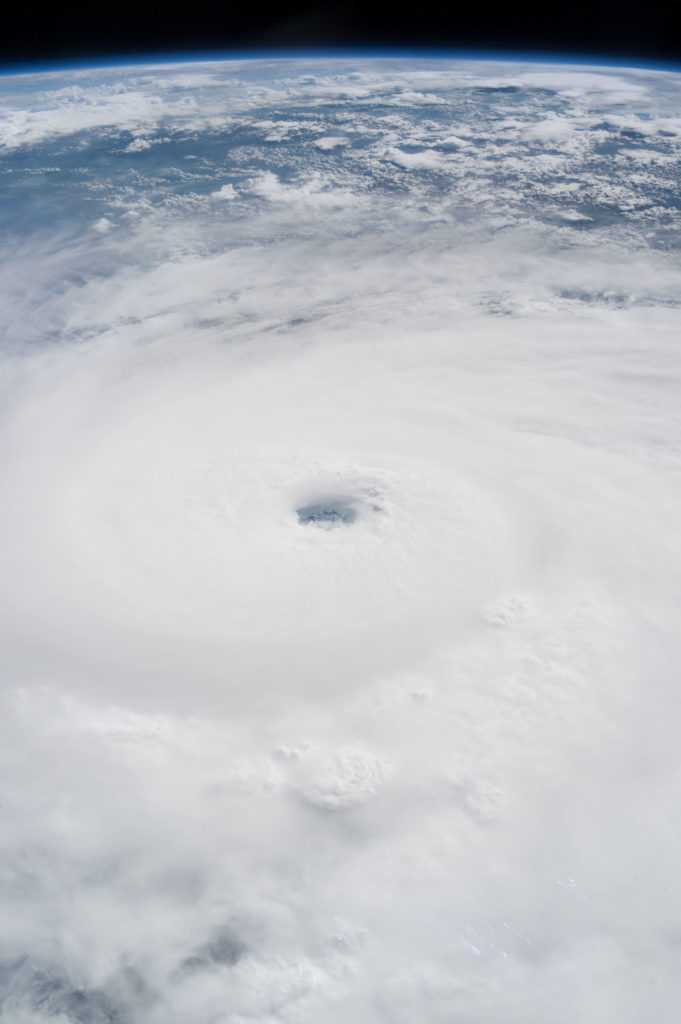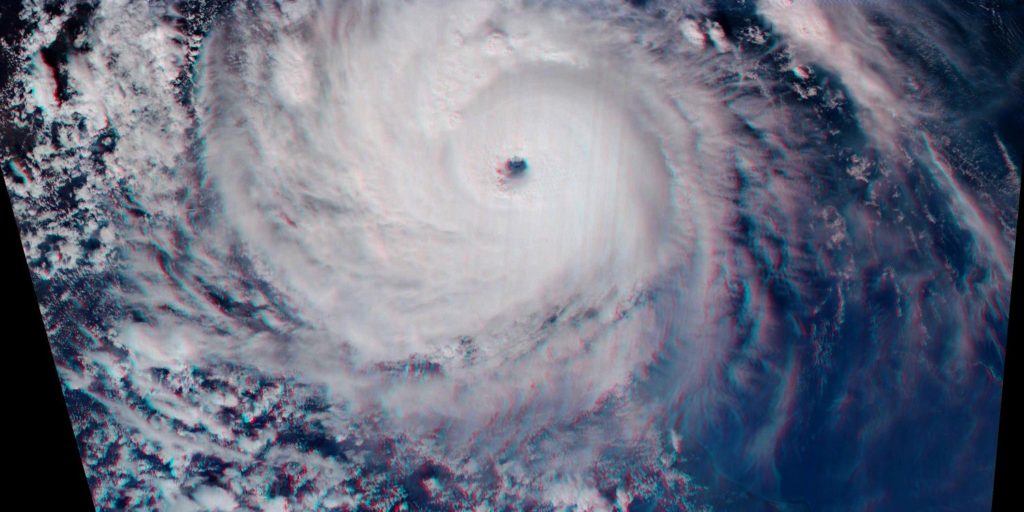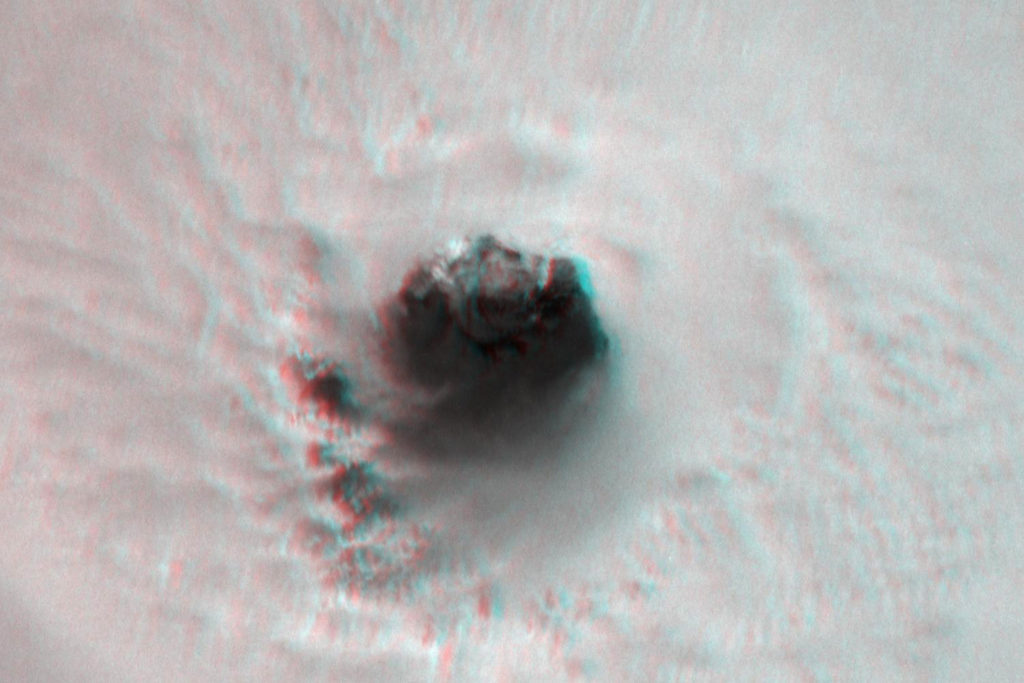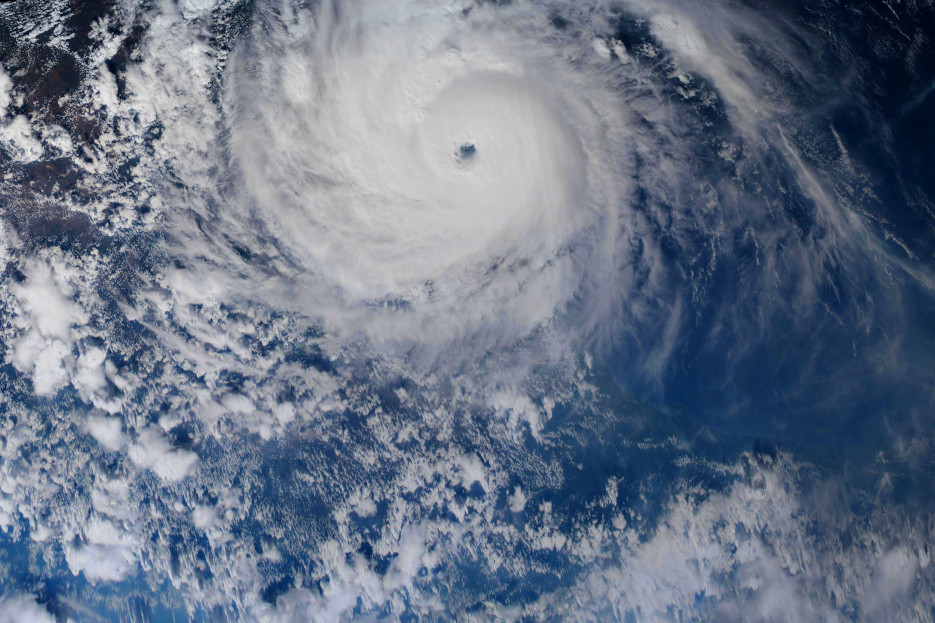One of the precursor projects for Tropical Weather Analytics’ Hurricane Hunter Satellites was the CyMISS (Tropical Cyclone intensity Measurements from the ISS) project which ran from 2014 to 2019. Funded by a series of grants from CASIS (Center for the Advancement of Science in Space) which manages the ISS US National Laboratory for NASA, CyMISS was performed by the science team at Visidyne (the corporate antecedent of Tropical Weather Analytics) for NASA’s Tropical Cyclone Experiment as part of NASA’s CEO (Crew Earth Observations) activities on the International Space Station. The goal of CyMISS was to acquire image sequences of intense tropical cyclones (TCs), such as hurricanes and typhoons, from the ISS using a specially designed photography protocol (see “The Cyclone Intensity Measurements from the ISS (CyMISS)”) to support the development of stereographic imaging techniques of these destructive storms. These techniques will allow the altitudes of the cloud tops near the eye of TCs to be precisely determined so that these TCs can be more accurately characterized compared to existing remote sensing methods (see “Using the Carnot Engine Model to Characterize Hurricanes from Orbit”)
During the course of this five-year project, the CyMISS science team (which is now the TWA science team) amassed a large collection of storm images that we wish to share. One of the TCs observed in support of CyMISS by the crew of ISS Expedition 52 in 2017 was Hurricane Harvey.

A total of 240 photographs, like the example shown above, were acquired by the crew of Expedition 52 during a four-minute observation session which started at 21:21:00 GMT (see “ISS Daily Summary Report – 08/25/17”). At this time, Hurricane Harvey was located at about 27.5° N, 96.5° W in the Gulf of Mexico and was rated as a strong Category 3 storm with sustained winds of about 201 kph (125 mph). A synoptic 3D view created from a mosaic of ISS photographs taken that day is shown below. In order to create the anaglyphic 3D image (left eye red, right eye blue) shown below, the individual photographs from the original image sequence were remapped to approximate an overhead view before various parts of the frames were stitched together into a synoptic 3D mosaic covering an area of approximately 1,500 by 1,000 kilometers. A high resolution version of this synoptic 3D mosaic with an image scale of ~1,000 meters/pixel can be viewed by clicking on the image below. This image clearly displays much 3D structure throughout the scene with the differences in the altitudes of clouds associated with Hurricane Harvey clearly higher than lower altitude clouds caused by other types of more localized weather-producing activity (e.g. the creation of cumulus towers over land under the influence of the summer afternoon Sun).
![]()

The close up 3D image shown below was created using a pair of close up photographs of the 30-kilometer eye of Hurricane Harvey taken a few seconds apart around 21:23:08 GMT (4:23:08 PM CDT) about 5½ hours before it hit the Texas coast. Only the red channel of the original color images was used in order to cut through any atmospheric haze and maximize the visibility of the cloud features. These images were remapped to approximate an overhead view before being combined to create an anaglyphic 3D image. The resulting stereo view, which can be seen at full size with a scale of 100 meters/pixel by clicking on the image below, covers an area of 150 by 100 kilometers and clearly reveals the structure in and around the eye of Harvey.
![]()

In the days ahead, Hurricane Harvey dumped record amounts of rain on Texas including the Houston area where NASA’s Johnson Space Center (JSC) is located. Because of the historic flooding, JSC was shut down until September 5 and our team had to wait two weeks instead of the usual couple of days before these images were available for us to analyze. Stereo data such as that shown here will one day help our team provide more accurate information on the state and winds associated with hurricanes which will improve the accuracy of hurricane track and intensity forecasts in the future.
Related Video
Here is a NASA video of the ISS overpass of Hurricane Harvey as the CyMISS image sequence was being acquired:
Related Reading
Drew LePage, “The Hurricane Hunter Satellites”, Drew Ex Machina, May 15, 2022 [Post]
Drew LePage, “Using the Carnot Engine Model to Characterize Hurricanes from Orbit”, TWA Blog, July 23, 2022 [Post]
Drew LePage, “Turn Up the Stereo”, TWA Blog, March 3, 2022 [Post]
Paul Joss, “The Cyclone Intensity Measurements from the ISS (CyMISS)”, Space Station Research Explorer [Page]
Drew LePage, “Earth Day: Dramatic Weather in 3D Images from Space”, Space Station Explorers, April 21, 2018 [Post]



